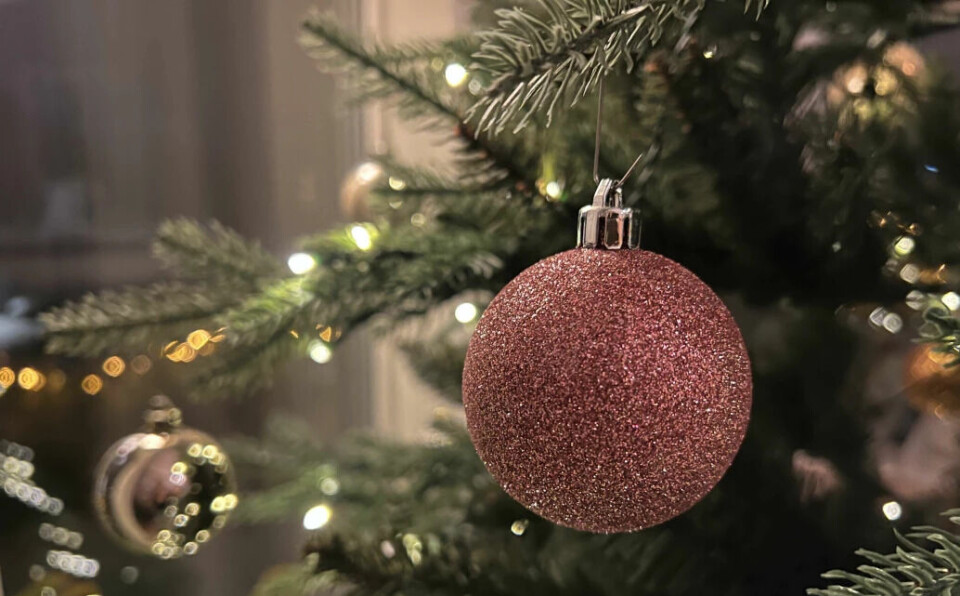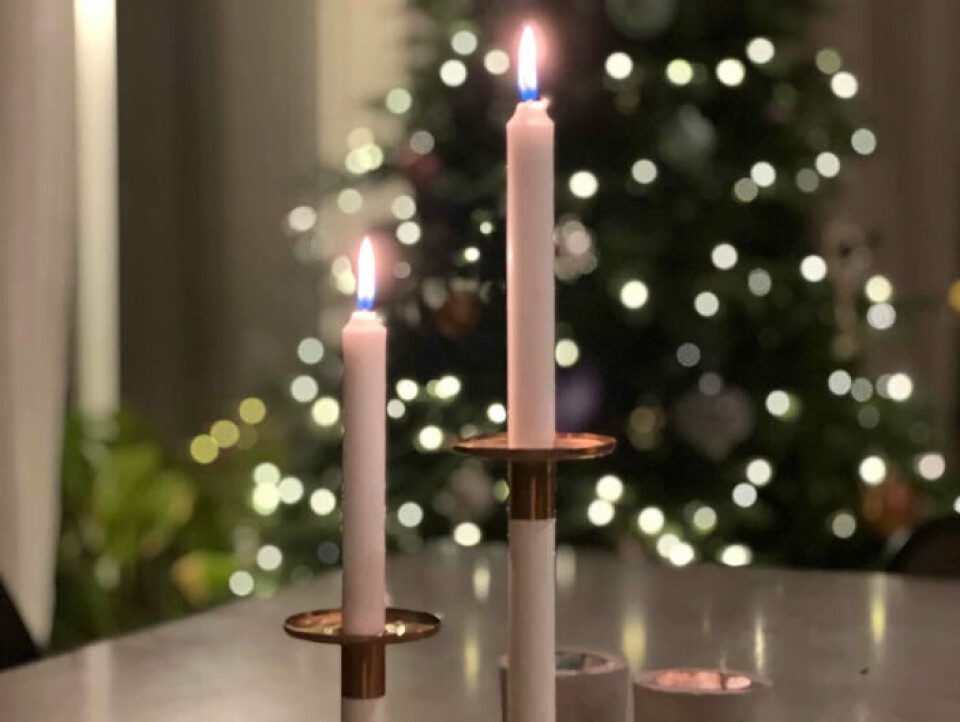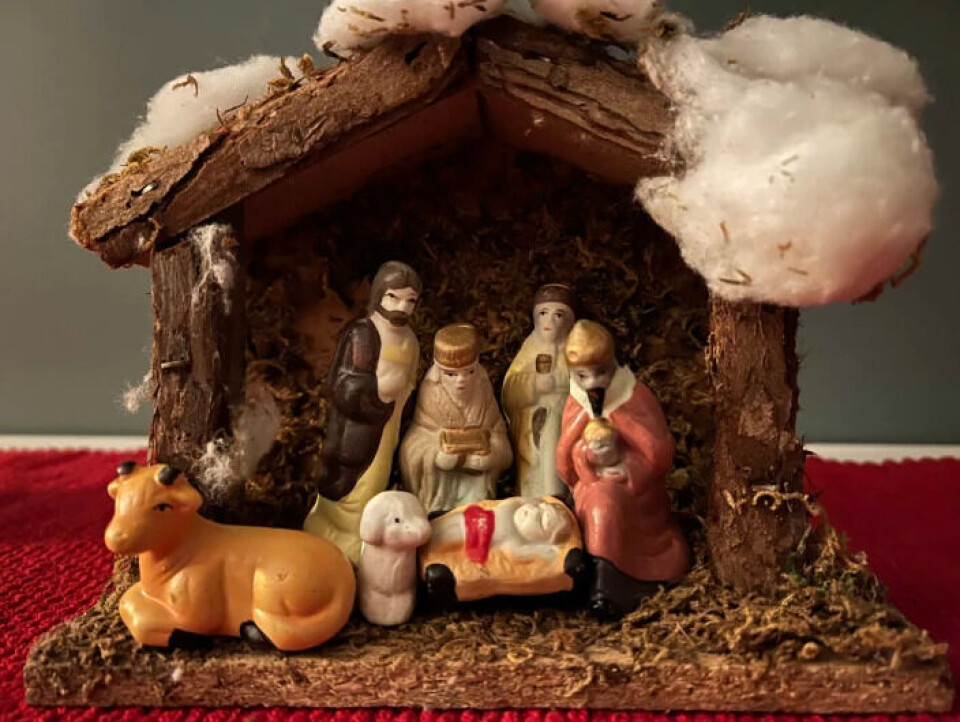THIS ARTICLE/PRESS RELEASE IS PAID FOR AND PRESENTED BY THE University of Agder - read more

Birds, flags and baubles on the Christmas tree are all hidden symbols
Even the Christmas tree stand has a hidden meaning.
Many people celebrate Christmas without thinking about the Christian traditions and symbols that can be found in everything from the Christmas tree itself to how it is decorated.
Professor Helje Kringlebotn Sødal reveals several hidden symbols hiding on the Christmas tree.
“Some may know that the Christmas tree has biblical references which link to communion with Jesus and eternal life. It is probably less widely known that the Christmas tree stand itself, with its original cross shape, also has a symbolic meaning. During Christmas, the cross would have been hidden under the tree. What happened at Easter would then be covered by the joy of Jesus’ birth,” she says.

Bells and birds
Kringlebotn Sødal says that the bells that we find in everything from Christmas music to gingerbread cutters also serves as practical reminders.
“Christmas bells were supposed to be a reminder of church and of the importance of gathering together as a congregation,” she says.
Birds, which are sometimes used to decorate the tree, also have a Christian meaning.
“The bird, or the dove in particular, is a symbol of the Holy Spirit. Birds express the moving nature of the Spirit,” Kringlebotn Sødal explains.
- Read more about the sounds associated with Christmas: Christmas music follows its own recipe

Edible decorations on the tree
The custom of putting edible decorations on the Christmas tree is not about having easy access to snacks.
“It used to be common to decorate the tree with cones filled with something edible, a reminder of the story from the Bible about the time Jesus fed 5,000 people,” she says.
Kringlebotn Sødal says that people used to hang apples on the tree.
“Apples may have been easier to come across than Christmas baubles, but the apple was also a reminder of the fall from grace that baby Jesus came to remedy. In the past, bread reminiscent of the communion wafer could be hung on the tree along with apples, and so the apple represented sin and the communion bread forgiveness,” she says.
Light and colours
Candles also play a significant role in Christmas celebrations.
“Candles are the most beautiful when they are lit and burn down. They provide both light and heat, while at the same time burning out and becoming smaller. This is a symbol of the life of Jesus, which ‘burned down’ for others,” the professor explains.

The gingerbread house that you decorate with white icing and red and green chocolate beans, for example, could also have a Christian background.
In the old church tradition, the colour green represents the power and growth of the gospel, while red is a colour representing human sin, love and suffering. White is the colour of purity, light and holiness.
“From the colours alone, we can read an entire theology. It is about the human meeting the sacred and being bound together by eternal hope,” she says.
Other Christmas symbols invoking Chistian meaning:
- Red hearts: God’s love for people
- Christmas baubles: Symbol of the globe, united by Jesus
- Christmas paper chains: Jesus connecting God and humans, and connecting people with each other
- Straw figurines: Reminder of the straw in the manger
- Flags on the tree: Reminder to each individual country that ‘Jesus is also for us’ and is not linked to any exclusive nationalism.
The three wise men and the stable
Regardless of one’s beliefs, there are aspects of the Bible’s narratives of Jesus’ birth that are historically doubtful. Such as the idea of Jesus being born in a stable, Professor Kringlebotn Sødal elaborates.
“The Bible doesn’t say that he was born in a stable. Historically, it could have been a house where people and animals lived under the same roof, but on separate levels. It is conceivable that there was no room for Mary and Joseph on the upper level where people would have lived. Or he could have been born in a cave,” she says.
The three wise men, or three magi, may also originate from traditions.
“There is nothing in the Bible about there being three men, or whether they were magi or kings. However, it says that there were three gifts: gold, frankincense and myrrh. The gifts may have influenced the idea of how many there were,” she says.

Kringlebotn Sødal says that the notion that there were three magi can also be connected to the fact that the narrative of Christmas in the Gospel of Matthew has been read in the light of a psalm and a prophecy in the Old Testament that deals with kings.
And Christmas Eve itself - the date 24 December - may have been a strategical choice.
“In early Christian tradition, Jesus was celebrated as the sun dispelling the darkness of paganism. The date was chosen as a counter response to the Roman celebration of the sun god, which was held then. However, different denominations celebrate on different dates," she concludes.
———
Read the Norwegian version of this article on forskning.no

This article/press release is paid for and presented by the University of Agder
This content is created by the University of Agder's communication staff, who use this platform to communicate science and share results from research with the public. The University of Agder is one of more than 80 owners of ScienceNorway.no. Read more here.




































